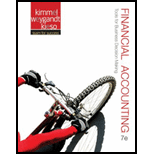
Concept explainers
(a)
Accounts receivable refers to the amounts to be received within a short period from customers upon the sale of goods and services on account. In other words, accounts receivable are amounts customers owe to the business. Accounts receivable is an asset of a business.
Bad debt expense:
Bad debt expense is an expense account. The amounts of loss incurred from extending credit to the customers are recorded as bad debt expense. In other words, the estimated uncollectible accounts receivable are known as bad debt expense.
Aging of receivables:
A method of determining the estimated uncollectible receivables based on the age of individual accounts receivable is known as aging of receivables method.
Allowance method:
It is a method for accounting bad debt expense, where amount of uncollectible accounts receivables are estimated and recorded at the end of particular period. Under this method,
Direct write-off method:
This method does not make allowance or estimation for uncollectible accounts, instead this method directly write-off the actual uncollectible accounts by debiting bad debt expense, and by crediting accounts receivable. Under this method, accounts would be written off only when the receivables from a customer remain uncollectible.
To prepare: The
(b)
To prepare: The adjusting entry for recording the bad debt expenses at December 31, 2014.
(c)
To prepare: The
(d)
To prepare: The journal entry to write-off $750 of accounts receivable as uncollectible, under direct write-off method.
(e)
To describe: The advantages of using aging schedule and allowance method rather than direct write-off method in accounting for uncollectible accounts.
Want to see the full answer?
Check out a sample textbook solution
Chapter 8 Solutions
Financial Accounting
- Supply costs at Coulthard Corporation's chain of gyms are listed below: Client-Visits Supply Cost March 11,654 $ 28,435 April 11,450 $ 28,344 May 11,982 $ 28,583 June 12,700 $ 28,906 July 11,714 $ 28,462 August 11,200 $ 28,231 September 11,994 $ 28,588 October 11,685 $ 28,449 November 11,833 $ 28,516 Management believes that supply cost is a mixed cost that depends on client visits. Use the high-low method to estimate the variable and fixed components of this cost Compute the variable component first, rounding off to the nearest whole cent. Then compute the fixed component, rounding off to the nearest whole dollar. Those estimates are: A. $2.14 per client visit; $28,463 per month. B. $1.03 per client visit; $16,133 per month. C. $0.49 per client visit; $22,686 per month. D. $0.45 per client visit; $23,191 per month.arrow_forwardCorrect answer pleasearrow_forwardNeed correct answer general accounting questionarrow_forward
- provide correct answerarrow_forwardCorrect Answerarrow_forwardSunset Software has experienced high demand for its cloud-based services. The company expects its earnings per share (EPS) to grow by 18%, reaching $4.75 for this year. Estimate the market price per share (MPS) of the company's stock assuming the industry's price/earnings (P/E) ratio is 10.arrow_forward

 AccountingAccountingISBN:9781337272094Author:WARREN, Carl S., Reeve, James M., Duchac, Jonathan E.Publisher:Cengage Learning,
AccountingAccountingISBN:9781337272094Author:WARREN, Carl S., Reeve, James M., Duchac, Jonathan E.Publisher:Cengage Learning, Accounting Information SystemsAccountingISBN:9781337619202Author:Hall, James A.Publisher:Cengage Learning,
Accounting Information SystemsAccountingISBN:9781337619202Author:Hall, James A.Publisher:Cengage Learning, Horngren's Cost Accounting: A Managerial Emphasis...AccountingISBN:9780134475585Author:Srikant M. Datar, Madhav V. RajanPublisher:PEARSON
Horngren's Cost Accounting: A Managerial Emphasis...AccountingISBN:9780134475585Author:Srikant M. Datar, Madhav V. RajanPublisher:PEARSON Intermediate AccountingAccountingISBN:9781259722660Author:J. David Spiceland, Mark W. Nelson, Wayne M ThomasPublisher:McGraw-Hill Education
Intermediate AccountingAccountingISBN:9781259722660Author:J. David Spiceland, Mark W. Nelson, Wayne M ThomasPublisher:McGraw-Hill Education Financial and Managerial AccountingAccountingISBN:9781259726705Author:John J Wild, Ken W. Shaw, Barbara Chiappetta Fundamental Accounting PrinciplesPublisher:McGraw-Hill Education
Financial and Managerial AccountingAccountingISBN:9781259726705Author:John J Wild, Ken W. Shaw, Barbara Chiappetta Fundamental Accounting PrinciplesPublisher:McGraw-Hill Education





